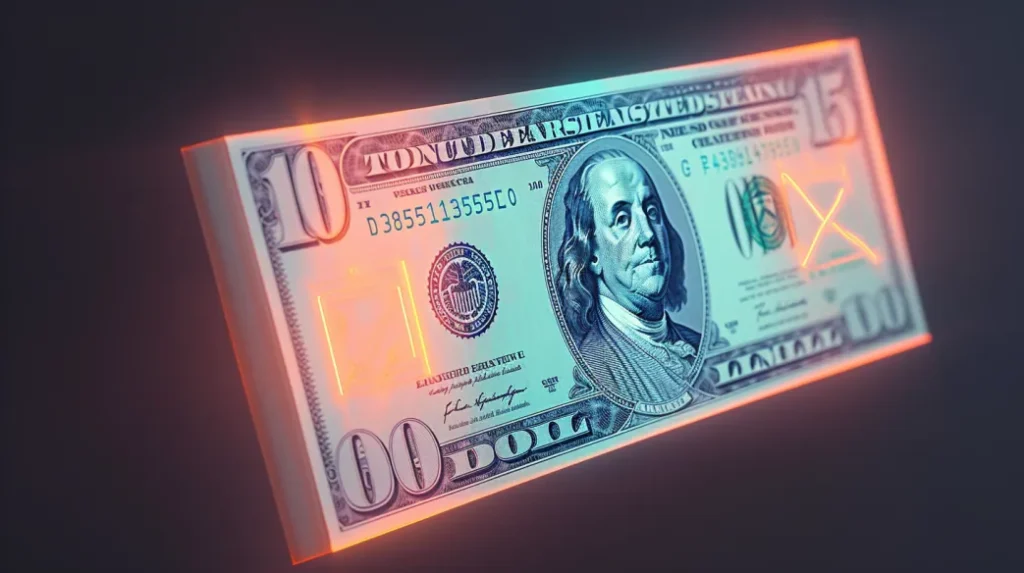Introduction
Have you ever been puzzled by the wizardry of foreign exchange rates, specifically the fluctuating “value of the US dollar”? One minute you’re lounging on a European beach, sipping a cocktail that cost you four dollars, and the next thing you know, it’s five dollars!
What sort of financial wizardry is this? Well, dear reader, brace yourself for an adventurous ride through the roller-coaster world of global economics.
The “value of the US dollar” doesn’t morph willy-nilly; it dances to the tune of multiple factors, some as constant as gravity, others as unpredictable as my Aunt Edna’s meatloaf. These range from trade balances to inflation rates, from interest rates to the whims of investor confidence. Intrigued? Come, join me as we unravel these mysterious forces shaping the greenback’s destiny.
Monetary Policies
The cogs and wheels behind a country’s monetary policy significantly impact the value of its currency. The Federal Reserve’s decisions on interest rates and money supply have a direct influence on the dollar’s value. Higher interest rates usually strengthen the dollar as they attract investors looking for higher yields.
Trade Balances
Picture this: you’re selling more homemade lemonade than you’re buying cookies from the kid next door. That’s a trade surplus, my friend, and it usually strengthens a country’s currency. Conversely, a trade deficit can weaken the currency.
Inflation Rates and Economic Performance
Here’s a fun fact: a low inflation rate often goes hand in hand with a strong currency value. It’s like a good cholesterol level for the economy. Pair that with robust economic performance, and you’ve got yourself a recipe for a stronger dollar.
###Investor Confidence
If the economic landscape were a high school, the US dollar would be the popular kid. When investors have faith in the US economy’s stability and growth, they invest in dollars, bolstering its value. However, like any high school popularity contest, this confidence can be fickle and change rapidly.
Political Stability and Geopolitical Risk
Just as you’d hesitate to invest in a business with unstable management, investors think twice before putting their money in a country with political turmoil. A stable political environment boosts the dollar, while geopolitical risk can trigger its slide.
Reserve Currency Status
The dollar’s role as the world’s leading reserve currency gives it a bit of an ego boost. It’s like being the universal plus-one to every global economic party. This status increases demand for the dollar, enhancing its value.
Debt-to-GDP Ratio and Supply and Demand
A high debt-to-GDP ratio can make investors skittish, potentially weakening the dollar. Similarly, the basic economic principle of supply and demand applies here too. If demand for the dollar exceeds its supply, its value goes up, and vice versa.
Market Psychology
Finally, never underestimate the power of perception. The financial market is a creature of mood, swayed by news, trends, and sentiments. If market players perceive the dollar’s prospects positively, its value tends to rise, and the reverse is also true.
Cryptocurrency: A New Dance in the Currency Ballet
In this grand ballet of currencies, a new dancer has entered the stage, flipping and spinning to its own beat: cryptocurrency. The increasing prominence of cryptocurrencies, like Bitcoin and Ethereum, has stirred the financial world and presents a compelling alternative to traditional currencies, like our good friend, the US dollar.
Cryptocurrencies operate on decentralization, meaning they aren’t tied to any particular country or governed by a central authority, like the Federal Reserve in the case of the dollar. They present a different approach to the concepts of value and trust, primarily relying on technology and cryptographic proof.
This lack of centralization means that factors such as interest rates, trade balances, or political stability, which significantly influence the value of the US dollar, have less direct impact on cryptocurrencies. I
nstead, cryptocurrencies are more influenced by technological advancements, regulatory news, and market adoption rates.
Furthermore, cryptocurrencies can be transferred across borders without the need for currency exchange, making them potentially more efficient for international transactions.
However, it’s important to remember that cryptocurrencies come with their own set of risks and volatilities, and their acceptance as a ‘better solution’ is still a matter of considerable debate.
As we continue to watch the ever-evolving dance of global economics, cryptocurrencies add a new rhythm to the mix. The interplay between traditional currencies and this new entrant is set to create an even more complex, yet fascinating, financial choreography.
In conclusion, the “value of the US dollar” is a complex ballet of multiple factors. It’s this intricate choreography that makes the world of economics an ever-evolving, fascinating spectacle. So, the next time you find your holiday cocktail costing an extra dollar, you’ll know the dance that led to it. Cheers to that!






